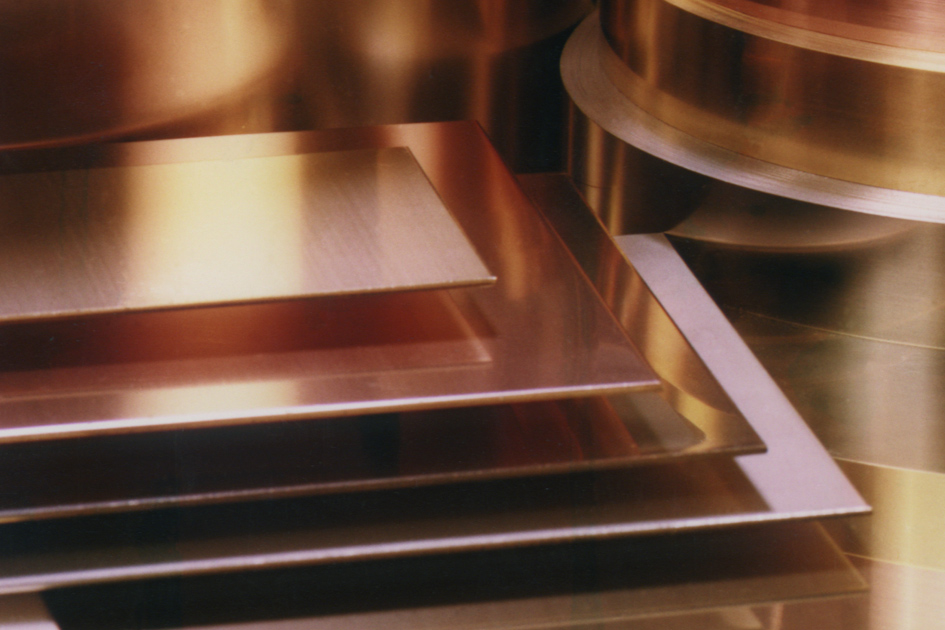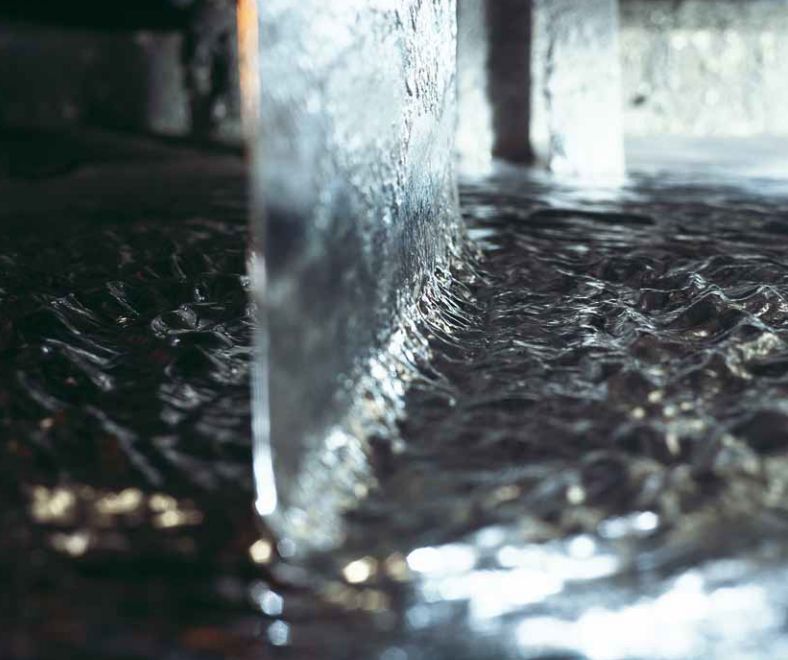
Coating processes
Most common processes for coating metallic components can also be used for copper base materials. Various pre-treatment processes are common for copper materials. The choice of processes depends on the surface requirements, often conditioned by the following machining processes.
The following list shows the many possibilities for coating this family of materials:
- Galvanic coating
- External currentless (chemical) metal deposition
- Hot-dip process (hot-dip tinning)
- Thin-film process (PVD/CVD)
- Spraying process
- Deposition welding
- Plating
- Painting
- Enamelling
- Artificial Patination / Chemical Dyeing
In addition to the above-mentioned processes, which can also be used for many other materials, artificial patination (chemical dyeing) is a special process that can be used to apply artificial patina coatings in many different colour variations.
The reasons for the coating are complex. For example, copper and copper alloys sometimes require corrosion protection. Surface coatings are carried out to ensure the operational safety of the materials throughout, for example when high demands are made on contact resistance, tarnish resistance, etc. Other reasons for coating are special requirements for the gloss and decorative effect of the materials, which is achieved for example by painting, enamelling and chemical colouring.
Surface treatments
Although copper materials have a decorative inherent colour, there is often a desire for other surface colours. In the course of time, copper develops a natural patina which, starting from bright, reddish copper, can run through dark brown to light green. These and other shades can also be produced artificially. These very thin colour coatings on copper materials are created by reactions of certain chemicals, mostly in aqueous solutions, with the metal surface. Copper coatings come in different varieties. While enamel coatings are mostly applied for decorative reasons, lacquer and synthetic resin coatings – often transparent – are used to preserve the natural colour of the materials or the chemical colourings. Other coatings are used to improve corrosion protection. Metallic coatings are common, for example by electrolytic (galvanic) coating, electroless (chemical) deposition and the application of hot-dip coating.

Tinning of copper materials
The main use (60-65 %) of copper materials is in electrotechnical applications. Almost all branches of industry use them for current-carrying components. Connectors and stamped grids in particular are exposed to a variety of environmental influences during use, as shown here using the example of an automobile:
- Temperature: -40 to 150 °C
- Humidity
- Vibrations
- Electrical operating conditions
- Pollutant gases
- Fine dust
In order to ensure the durable functioning of the connectors, a number of material properties must therefore be considered and matched to the application. These complex requirements are met by plating copper materials. On the one hand, copper components are electroplated with precious metals – but tin plating is also a cheaper solution that is just as adequate for many applications. In terms of process technology, the alternatives are hot-dip tinning or electroplated tinning.
Chemical dyeing
In principle, it is possible to apply a multitude of different colours to copper, brass or bronze by means of so-called dyeing. The variety of achievable optical effects and design possibilities has always represented an almost inexhaustible potential for copper materials. With chemical dyeing, it is never possible to achieve a completely uniform colour tone or appearance on large-area components.
Are you looking for different content?